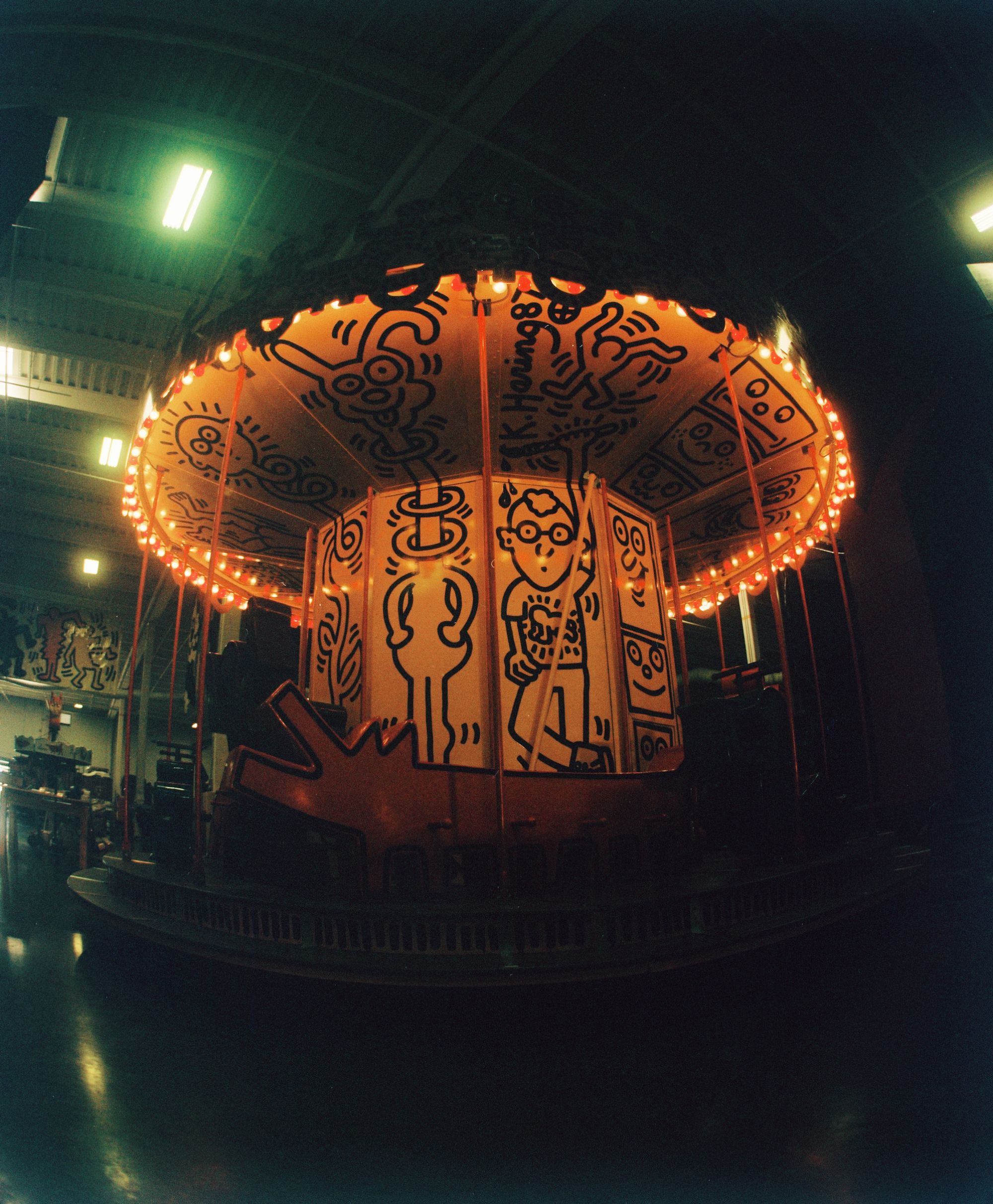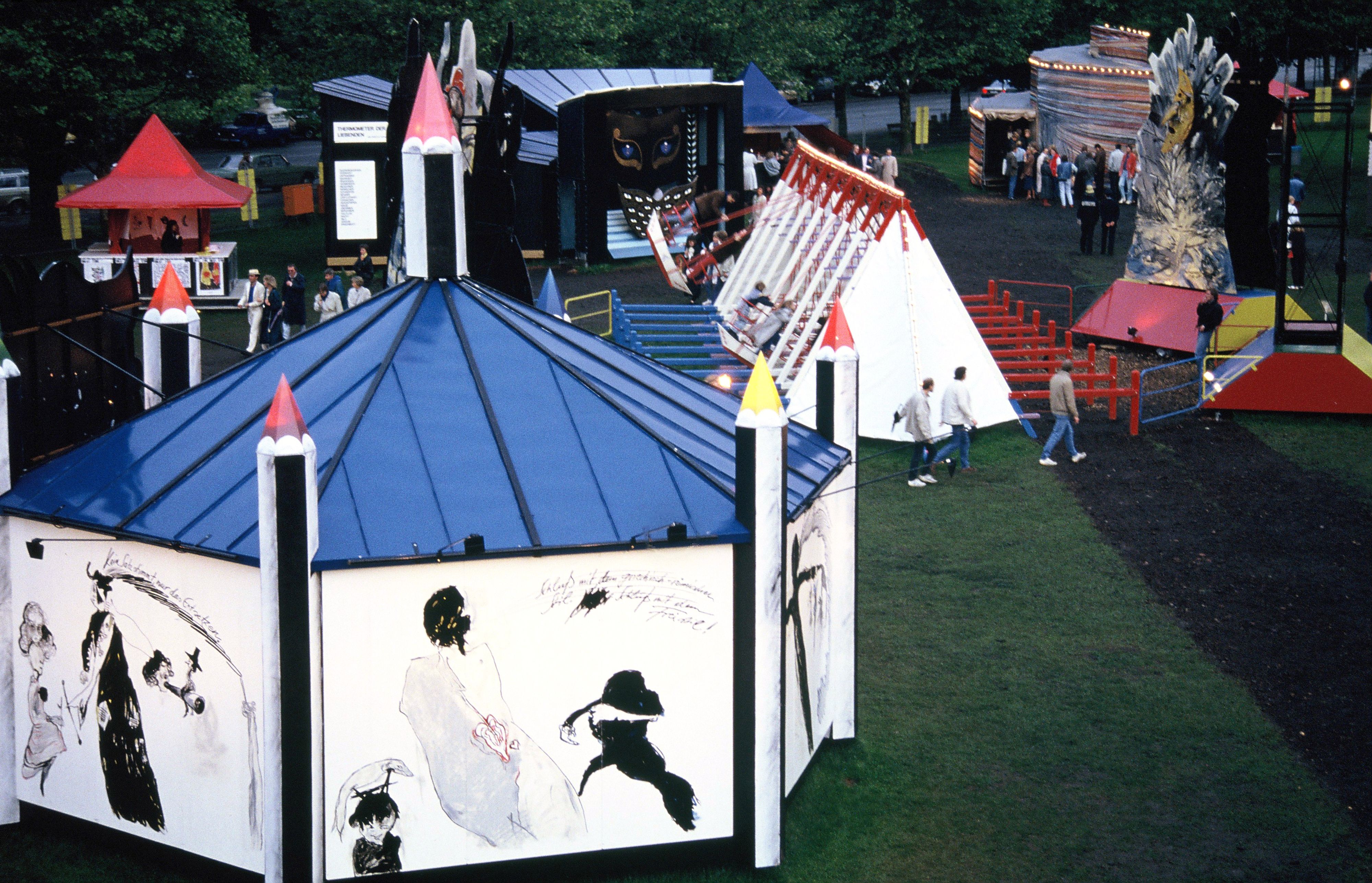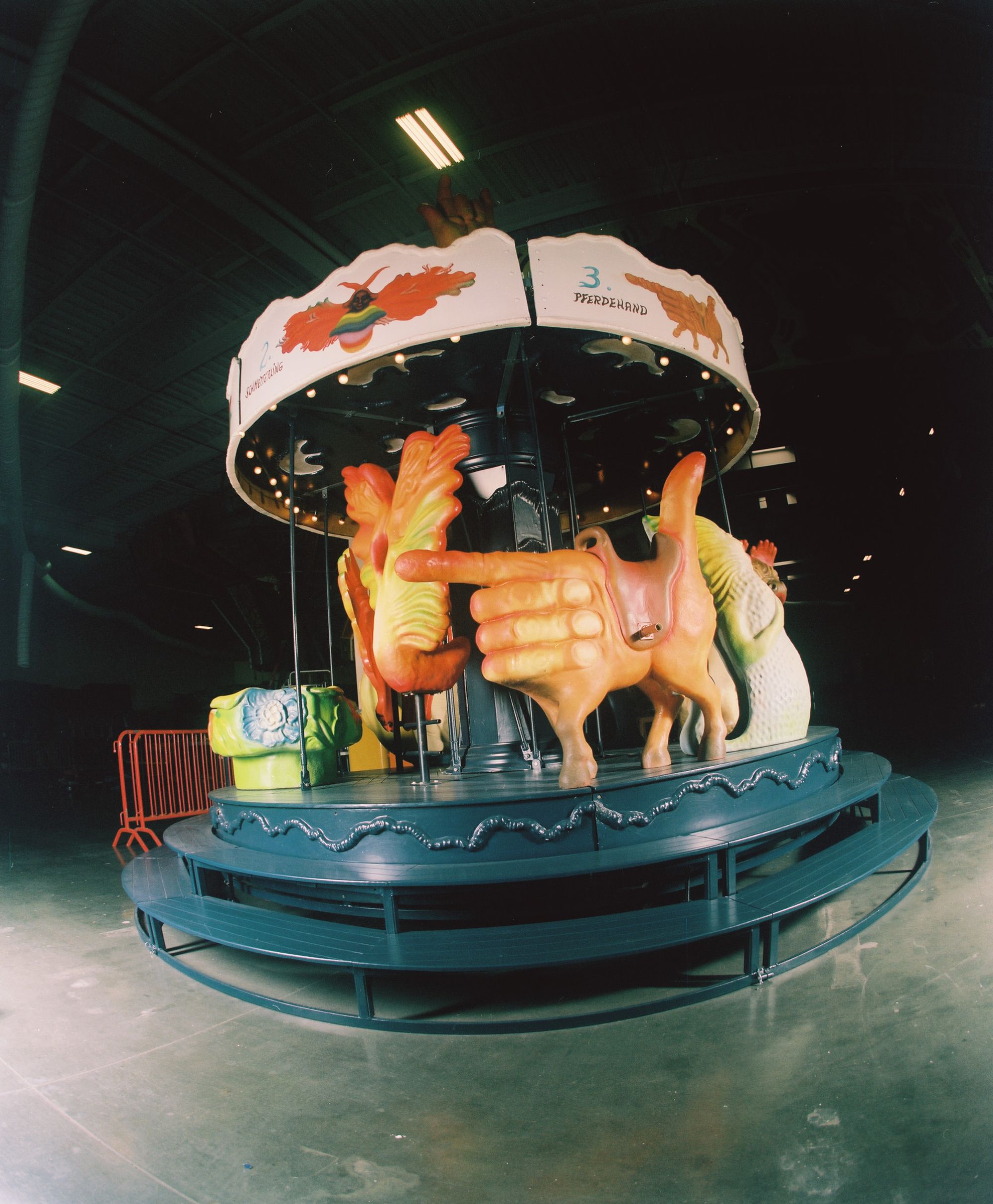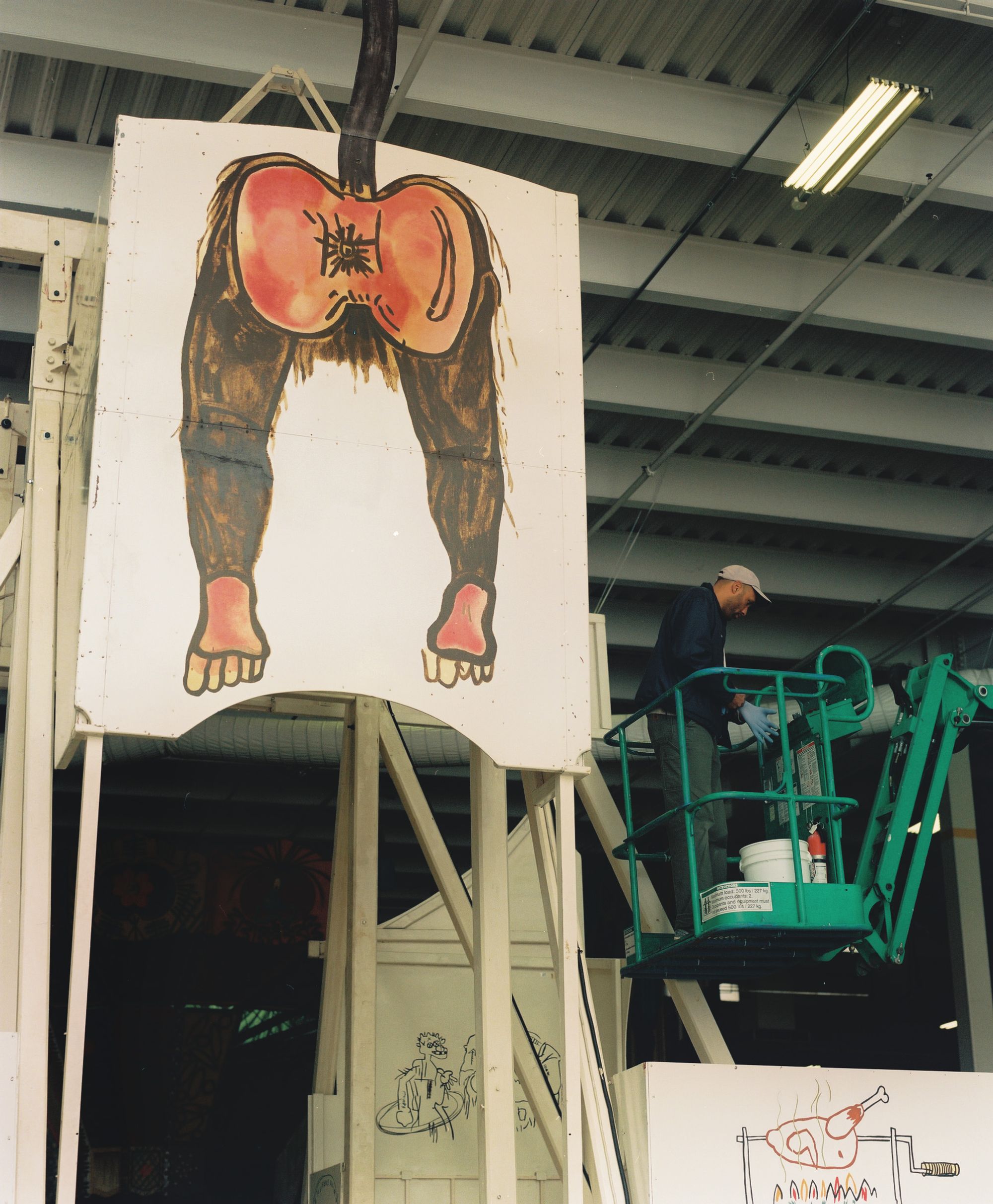
Arik Brauer's carousel for Luna Luna reassembled in Los Angeles, lit up in the dark. Photo by Lucas Creighton.

Fairground view of Günter Brus's universe of crayons pavilion at Luna Luna in Hamburg, Germany, 1987. Photography by Sabina Sarnitz.
Luna Luna remains a surprisingly occult bit of art history, an open secret passed around by certain cultural cognoscenti and recalled fondly by a few others with especially long memories. An amusement park, launched in 1987 by the Austrian artist and impresario André Heller, Luna Luna, like most such old-time roadside attractions, featured a carousel, a labyrinth, a Ferris wheel, and a variety of other rides and experiences to delight both young and old. Except Heller’s version was packed to the gills with work by some of the most famous contemporary artists — over 30 in all —, among them Jean-Michel Basquiat, Joseph Beuys, Salvador Dalí, Sonia Delaunay, Keith Haring, David Hockney, Roy Lichtenstein, and Kenny Scharf. It was Disneyland meets 80s SoHo, but with an international twist.

Arik Brauer's carousel for Luna Luna reassembled in Los Angeles, lit up in the dark. Photo by Lucas Creighton.

Arik Brauer's carousel. Photo by Lucas Creighton.
“When I first heard of it,” says Michael Goldberg, “I was immediately like, ‘What the hell is this? Why don’t I know about it?’” The founder of the New York-based creative agency Something Special Studios first learned of the long-vanished Luna Luna in 2019. Heller’s project had suffered a strange fate in the years since its début: after a successful three-month run in Hamburg, the entire complex was dismantled in anticipation of a European and then global tour; after legal snafus and financial difficulties, it was eventually purchased by a U.S.-based arts foundation, only to languish in a Texas warehouse for decades more. Determined to rescue Luna Luna from obscurity, Goldberg went to work. “I said to myself, ‘I’m on a mission,’” he recalls.
That mission eventually led to another warehouse, albeit a far more active and interesting one. Inside an enormous shed in eastern Los Angeles, hulking in the darkness like friendly, colorful monsters, the remains of Luna Luna are now being stored in anticipation of the park’s revival. Basquiat’s Ferris wheel; Haring and Arik Brauer’s carousels; Delaunay’s Orphist entryway; a glass labyrinth by Lichtenstein; a strange unearthly mirror dome by Dalí; Daniel Spoerri’s poop-house — it’s all there, a riot of old metal and dusty paint, presently receiving the delicate ministrations of a team of expert restorers. When finished, the whole thing should look much like it did back when it first opened: a colorful garish outdoor phantasmagoria, to judge from the photos in Phaidon’s recently republished monograph on the project. Only this time, the park is set to get a very contemporary spin. On Goldberg’s initiative (and with Heller’s blessing), the new Luna Luna will be relaunched thanks to a far-sighted partnership with DreamCrew, the entertainment and events company run by Canadian-born recording artist Drake, who put 100 million dollars behind a new and improved version that’s expected to travel to several still-unnamed cities across North America next year.

Jean-Michel Basquiat's painted Ferris wheel during reassembly. Photography by Lucas Creighton.

Preperatory sketches by Arik Brauer.

Seat detail from Keith Haring's carousel. Photography by Todd Middler.
The improvements will come from a suite of as-yet-unannounced artists, commissioned to create original works to complement the vintage pieces and expand the park’s appeal to a new audience. Brought on board to curate the 21st-century expansion is curator Lumi Tan, formerly of New York City performance space The Kitchen. Tan is managing the monumental task of mobilizing a large and diverse group of artists to produce work that not only reflects the same playful, childlike ingenuity of the 1980s material, but meets all the criteria to make it usable — and safe — for future visitors to the avant-garde fun fair. “I came into this thinking, ‘Oh, that’s a minor aspect,’” says Tan. “But all the engineering, and dealing with the actual physics of the ride, you’re really reckoning with the body in an inescapable way.” Fortunately for Tan, most of the creatives she’s commissioned so far have found the challenge “generative,” as she puts it, and are now hard at work on their new rides, even as the older ones are being reassembled in that L.A. hangar. If all goes to plan, Luna Luna will arrive in a town near you soon.